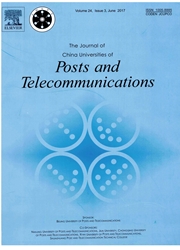

 中文摘要:
中文摘要:
一个新奇拓扑学计划,有多重活动水池方法(CMMSM ) 的房间,为信息的收集并且为在无线传感器网络监视的环境在这篇文章被建议。系统由许多静态的传感器组成,在察觉到地和多重活动水池的大规模散布了,航行在簇之中。精力的保存和协议的简化是在这个计划的重要设计考虑。不干涉拓扑学计划大部分与碰撞回避和随机的路由的能力简化完整分布式的通讯协议。在如此的拓扑学的簇头的全部的数字被分析,然后在一个回合的全部的精力消费的近似评估被执行。模拟结果证明 CMMSM 能节省可观的精力并且比低精力的适应聚类层次获得更高的产量(沥滤) 并且地理适应忠实(GAF ) 。
 英文摘要:
英文摘要:
A novel topology scheme, cell with multiple mobile sinks method (CMMSM), is proposed in this article for the collection of information and for the environment monitoring in wireless sensor networks. The system consists of many static sensors, scattered in a large scale sensing field and multiple mobile sinks, cruising among the clusters. Conservation of energy and simplification of protocol are important design considerations in this scheme. The noninterference topology scheme largely simplifies the full-distributed communication protocol with the ability of collision avoidance and random routing. The total number of cluster heads in such a topology was analyzed, and then an approximate evaluation of the total energy consumption in one round was carded out. Simulation results show that CMMSM can save considerable energy and obtain higher throughput than low-energy adaptive clustering hierarchy (LEACH) and geographical adaptive fidelity (GAF).
 同期刊论文项目
同期刊论文项目
 同项目期刊论文
同项目期刊论文
 期刊信息
期刊信息
